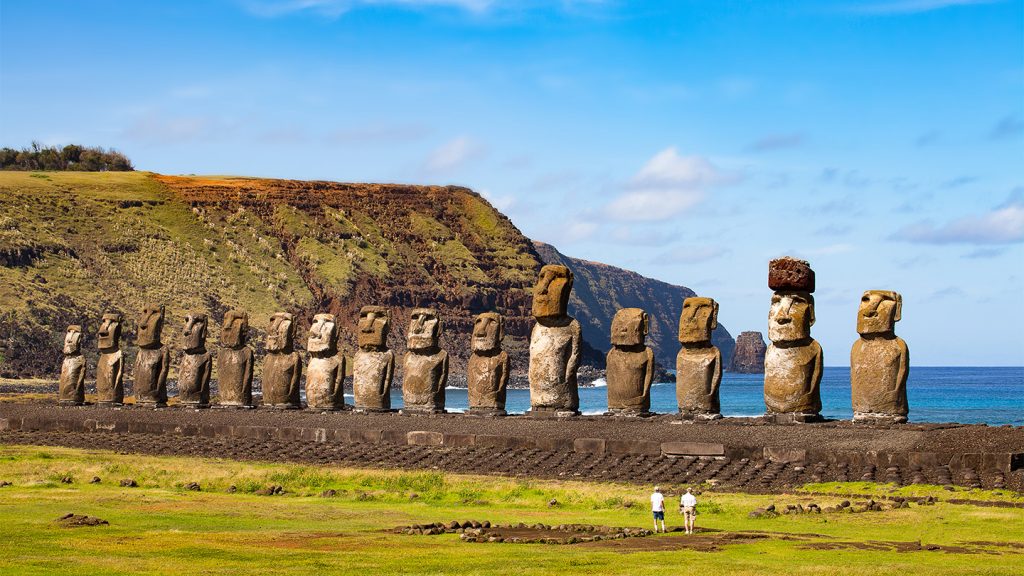A new study published in Science Advances challenges the popular belief that the early settlers of Rapa Nui, known for creating massive stone statues, caused their own downfall through overpopulation and resource depletion. Archaeologists Dylan Davis and colleagues from Columbia University conducted a new analysis of the island’s landscape, suggesting that Polynesian seafarers who arrived around 800 years ago maintained a small population of around 3,900 individuals until European arrival in 1722.
The new research estimates that only less than one-half of 1% of Rapa Nui’s territory was covered by rock gardens, a farming technique that helped grow sweet potatoes in volcanic soil. This estimate indicates that the island could have supported a maximum population of around 3,900 individuals through farming practices, supplemented by fish and sea resources. However, some researchers argue that the study is limited in scope and does not consider other cultivation practices that could have supported larger populations.
Two prior studies had attempted to estimate the population size of early Rapa Nui inhabitants based on farming practices like rock gardening. One study suggested that around 19% of the island was suitable for growing sweet potatoes, leading to population estimates ranging from 3,000 to 17,500 individuals. The new study used ground surveys and satellite imagery to identify rock garden areas on the island, ultimately estimating a population of around 3,900 individuals based on this data.
Critics of the new research argue that the machine learning models used in the study may have underestimated the extent of rock gardens on Rapa Nui, potentially leading to an underestimation of the island’s carrying capacity. Additionally, the study did not consider other cultivation practices that could have supported larger populations, such as plant cultivation in fertile soil that did not require rock gardens.
Further investigations using advanced satellite imaging and continued study of cultivation areas on Rapa Nui will likely provide a more accurate picture of pre-contact population sizes on the island. While the new study sheds light on the potential population size supported by rock gardens, it is important to consider other farming practices that may have contributed to the sustainability of early settlements on Rapa Nui. Continued research and collaboration among archaeologists will be crucial in further understanding the complexities of early Rapa Nui society.


